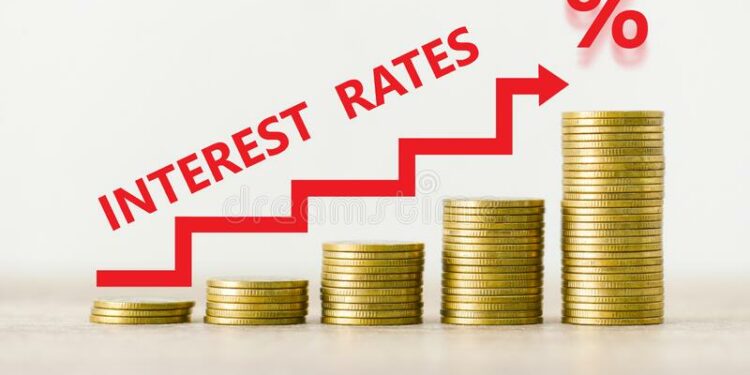Why Are Interest Rates Still High? The MPR vs Market Rates Debate
Ghana’s Monetary Policy Rate (MPR) plays a powerful role in shaping our economy. Set by the Bank of Ghana (BoG), this rate isn’t just a number—it’s a signal.
It tells investors, businesses, and consumers how the central bank sees the economy and where interest rates might head.
In theory, adjusting the MPR helps to manage inflation, guide lending behavior, and stabilize growth.
But today, despite signs of improvement in inflation and abundant liquidity in the banking sector, the MPR remains stubbornly high. Why?
Let’s break it down.
The Reality in the Markets: Liquidity Is Cheap—and Plentiful
While the official MPR stands at 25%, market indicators are painting a very different picture.
Short-term government borrowing is priced at 10.29%—down from 10.84% just a week ago.
The interbank rate—the rate banks use to lend to each other overnight—is reportedly under 15%, according to several banking sources. (Though BoG still reports a higher number of 24%.)
The 91-day Treasury bill was oversubscribed last week. The government sought GHS 15.16 billion and received bids totaling GHS 28.1 billion—an oversubscription of over 85%!
What does this tell us? Banks are flush with liquidity. That’s a fact.
Banks Don’t Know What to Do With All This Money
Across the industry, banks’ Asset-Liability Committees (ALCOs) are scrambling to figure out what to do with their excess cash.
Some are even considering rejecting fixed-term deposits. Why? Because that’s expensive money. The goal now is to shift deposits from fixed to current accounts—lowering the banks’ cost of funds, which could, in theory, lead to reduced lending rates for consumers and businesses.
But here’s the catch: we’re not seeing that happen.
Lending to the real sector hasn’t increased meaningfully. Interest rates charged to businesses remain painfully high.
The Culprit? The Ghana Reference Rate (GRR)
Why are rates still elevated despite falling market indicators and excess liquidity?
Because of the MPR.
Banks and the BoG jointly established the Ghana Reference Rate (GRR)—the benchmark around which lending rates are set. It’s calculated from three weighted components:
- BoG Monetary Policy Rate (MPR) – 40%,
- Interbank Rate – 20%,
- 91-day Treasury Bill Rate – 40%
Now, let’s look at the numbers:
- 91-day T-bill: 10.29%
- Interbank rate: <15%
- MPR: 25%
Despite market rates dropping, the heavy 40% weight given to the MPR keeps the GRR elevated at around 23%—which means interest rates for businesses and consumers remain high.
We Need Lower Interest Rates—Now
If we want to see real economic growth, especially in the real sector, we must bring down the cost of financing.
Here’s what happens when we do:
- Lower interest rates reduce the cost of production. Reduced production costs lower the price of goods and services.
- Lower prices mean reduced inflation.
When inflation falls, we can establish positive real interest rates (nominal rates minus inflation).
And if the cedi remains stable, investors have less incentive to flee into USD assets—taking the speculators out of the market.
In short: lowering the MPR helps fix inflation, supports business growth, and stabilizes our currency.
The Ball is in the Monetary Policy Committee’s Court
The Monetary Policy Committee (MPC) must act decisively. It’s time to bring the MPR below 20% at the next meeting.
The most recent inflation print was 13.7% (June). If July’s inflation continues downward—as expected—there will be no justification for keeping the MPR at 25%. The market has already moved. The policy must now catch up.
The RESET President John Dramani Mahama promised is clearly underway—and credit is due.
Congratulations to Dr. Ato Forson, the Minister of Finance, and Dr. Johnson Asiama, Governor of the Bank of Ghana, for their tireless work and strategic leadership.
Final Word
Ghana doesn’t lack liquidity. What we lack is policy alignment.
It’s time to harmonize the MPR with market realities. Our businesses—and the future of our economy—depend on it.
*AKM*
_02Aug2025_








